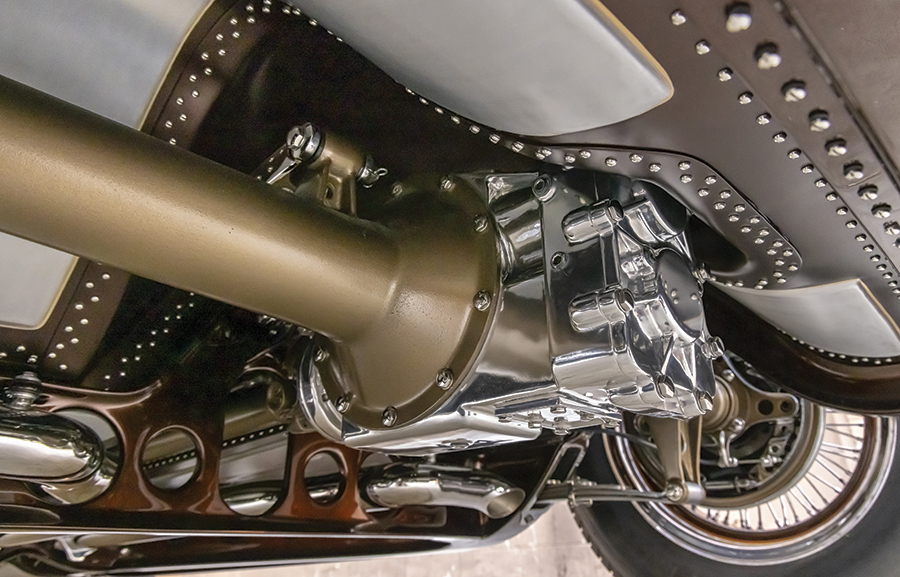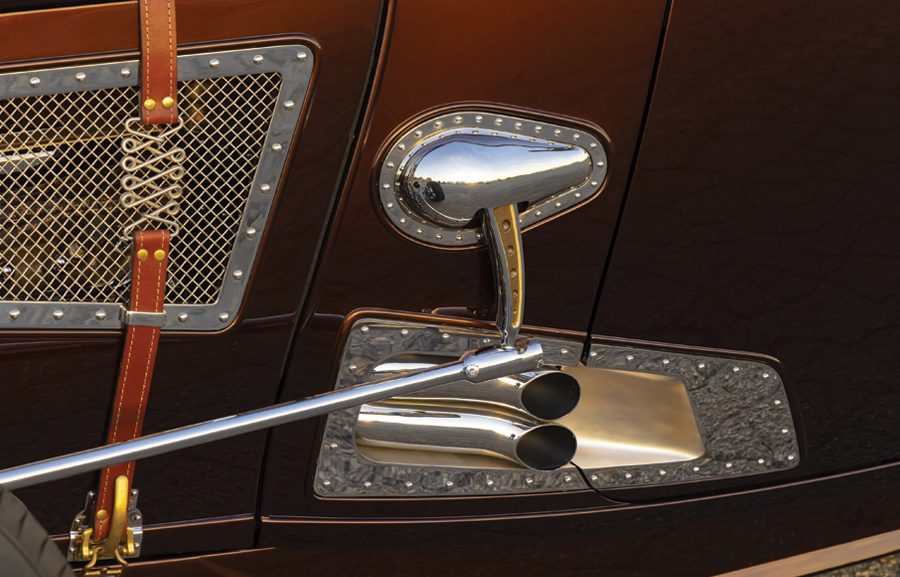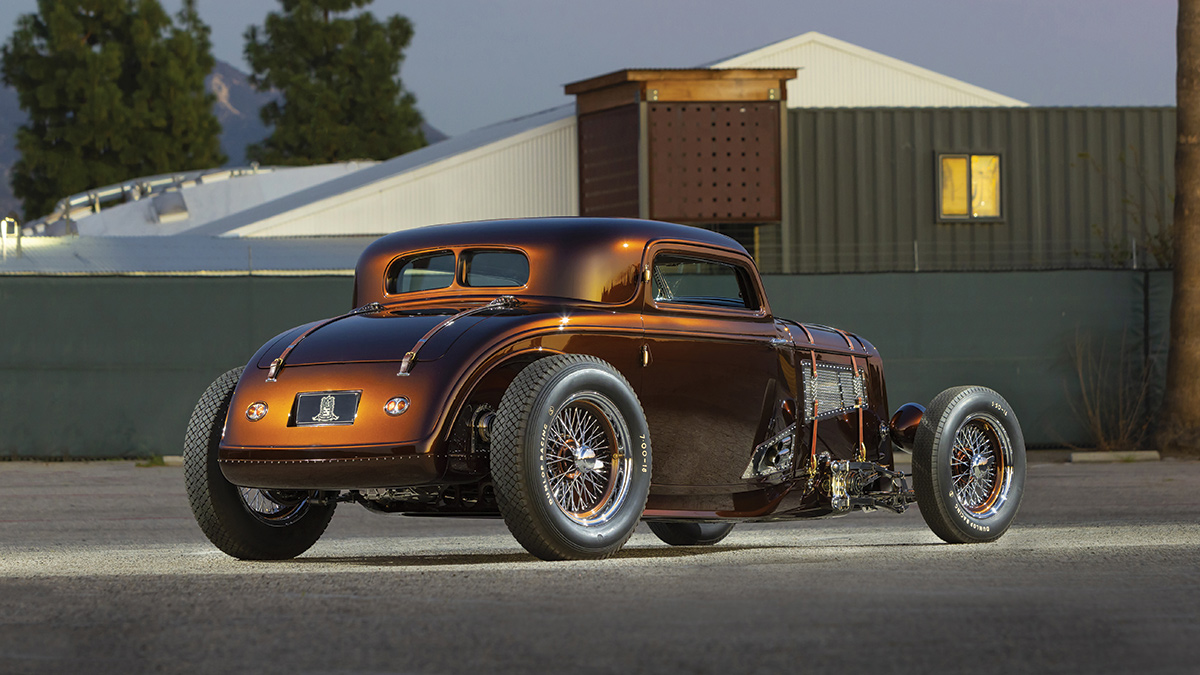 Photography by Wes Allison
Photography by Wes Allison  Illustrations By e. Black Design Co.
Illustrations By e. Black Design Co.
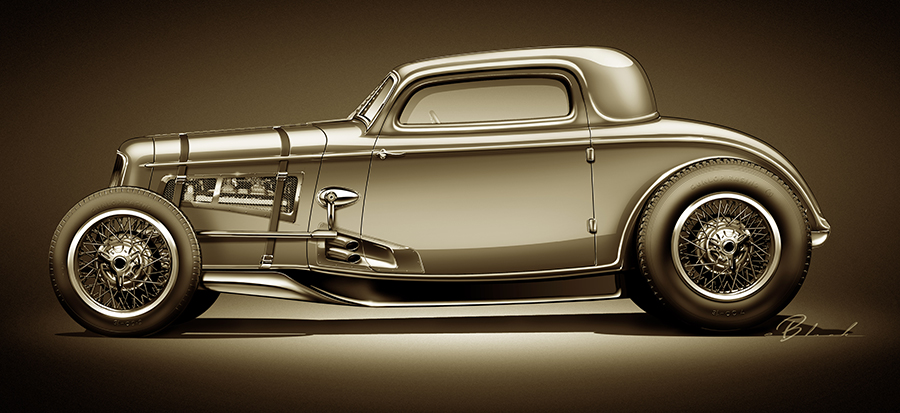
well thought out hot rod build is much like a fine wine: It gets better with time. To rush to completion will only lead to disappointment. Use wisely the obligatory time and the results will yield the look and “taste” of success.
A quick backstory tells us this ’32 Ford three-window highboy coupe originally gained traction through the ideas of Troy Ladd of Hollywood Hot Rods (HHR) fame and expressed through the crisp and well-detailed artwork of Eric Black of e. Black Design Co. This idea gained its impetus through a magazine story put forth by Tim Bernsau of Rod & Custom many years back. The thought was to take a traditional American hot rod and add European sports car design elements. Over the course of time the project went from a collaboration of Ladd and Black to a hot rodder with the foresight and wherewithal to make sure the build would come to fruition—Pat Gauntt. And so went Pat’s ’32 Ford three-window highboy coupe built at HHR in Burbank, California. Although the original design concept with Ladd and Black began in 2007, the actual physical build took about six years, making its debut at this year’s Grand National Roadster Show. It caught a lot of people’s attention, especially the judges for the Al Slonaker Memorial Award presented by ARP, as they awarded the coveted trophy to this ’32 Ford three-window highboy coupe.
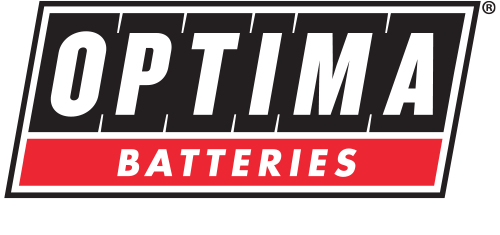
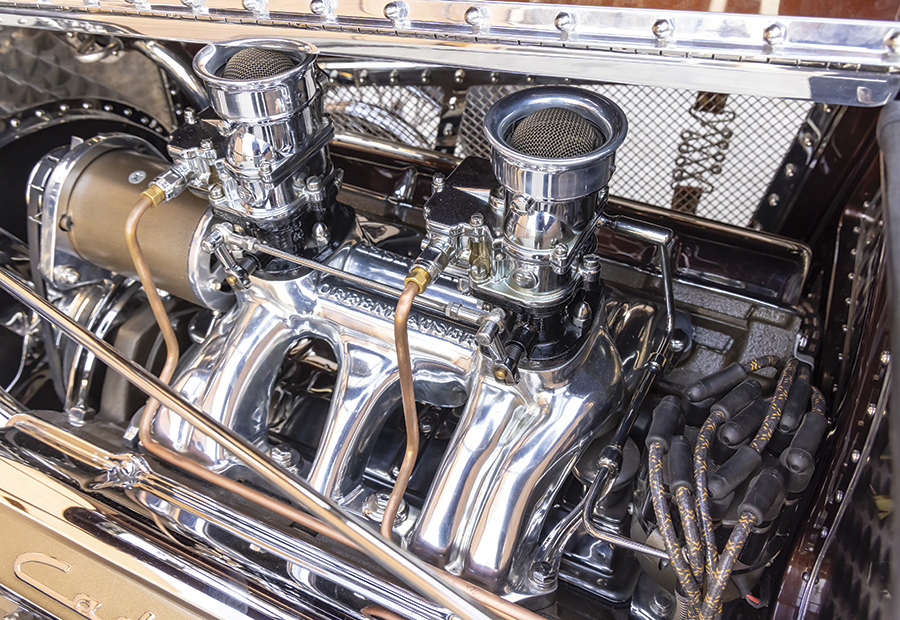
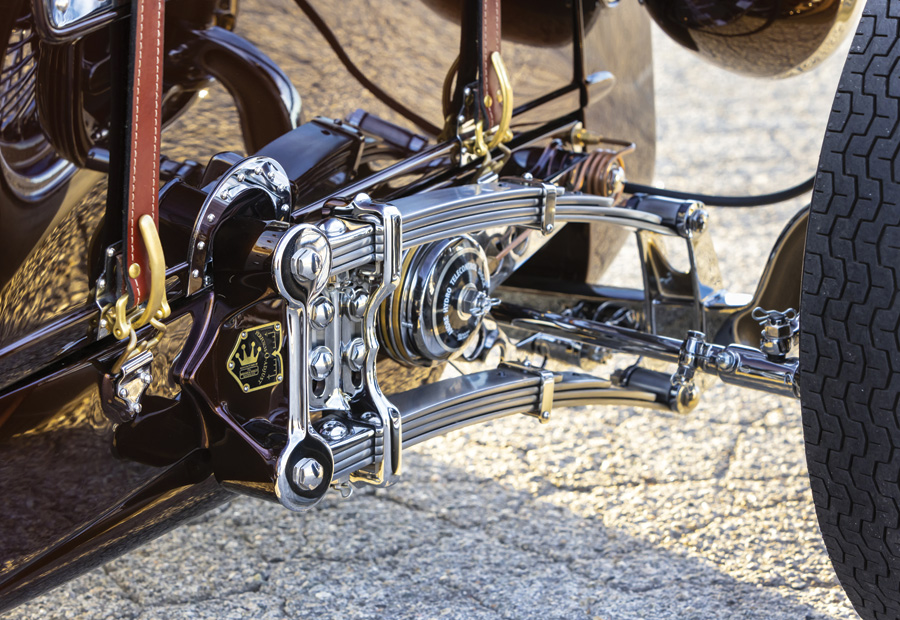
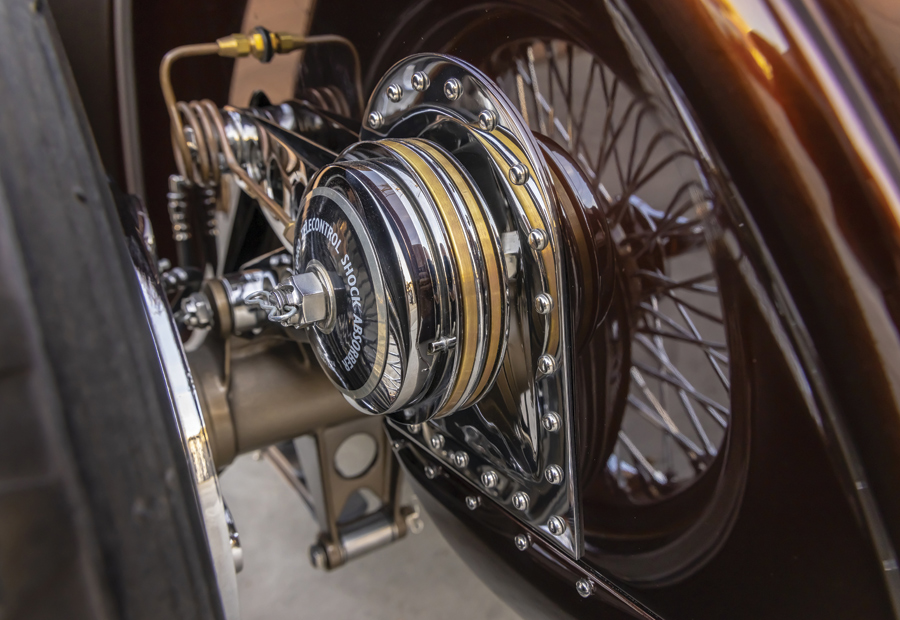
Examples of individual pieces of HHR craftsmanship can also be seen in the rear roll pan, the aluminum belly pans, the handmade grille and insert, and a fabricated lengthened hood. The bodywork was performed at Mick’s Paint under the watchful eye of Mick Jenkins. He also oversaw the application of the House of Kolor brown color throughout. (To learn “the rest of the story” on the bodywork and its modifications check out the story on page 62 in this issue by Ron Covell.)

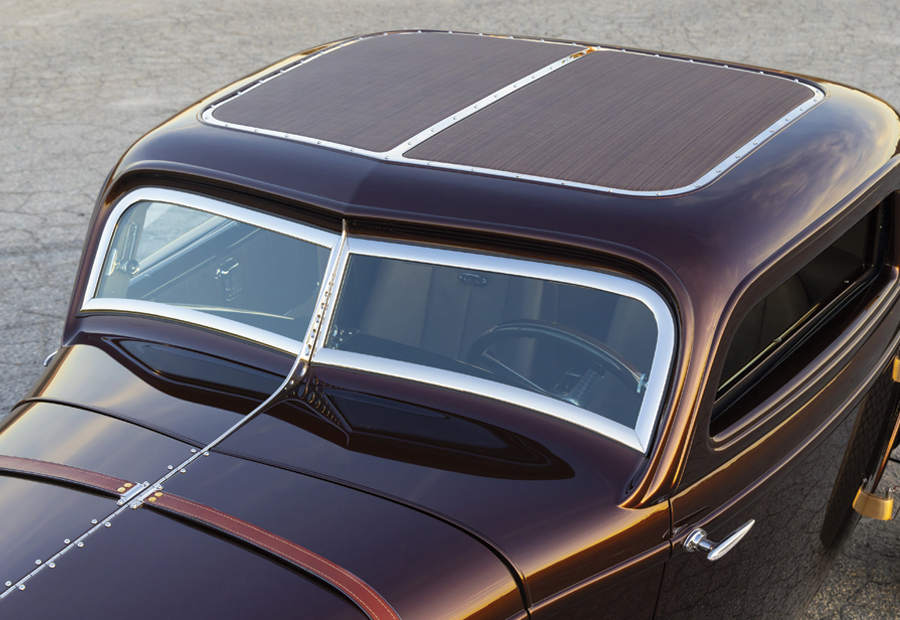
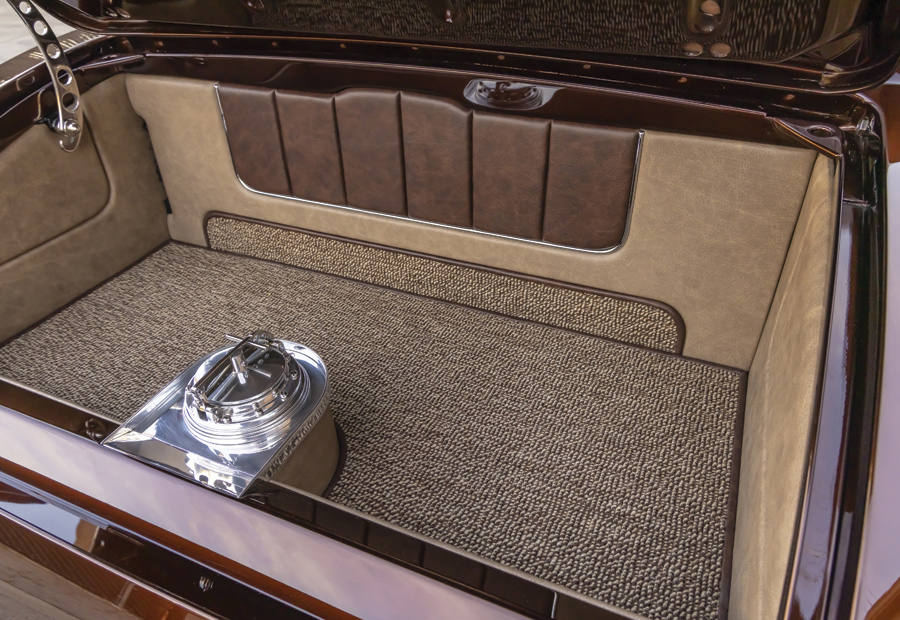
Other engine accessories include a modified stock water pump, a Down to Earth alternator, and a pair of 6V Optima batteries wired in series. There was also a need for a full complement of brackets and pulleys, which were designed and fabricated by HHR. The 300-plus horsepower V-8 backs up to a BorgWarner five-speed trans with a very mechanical and race car–inspired rail shifter, more HHR handiwork that sits atop the leather-covered trans tunnel.

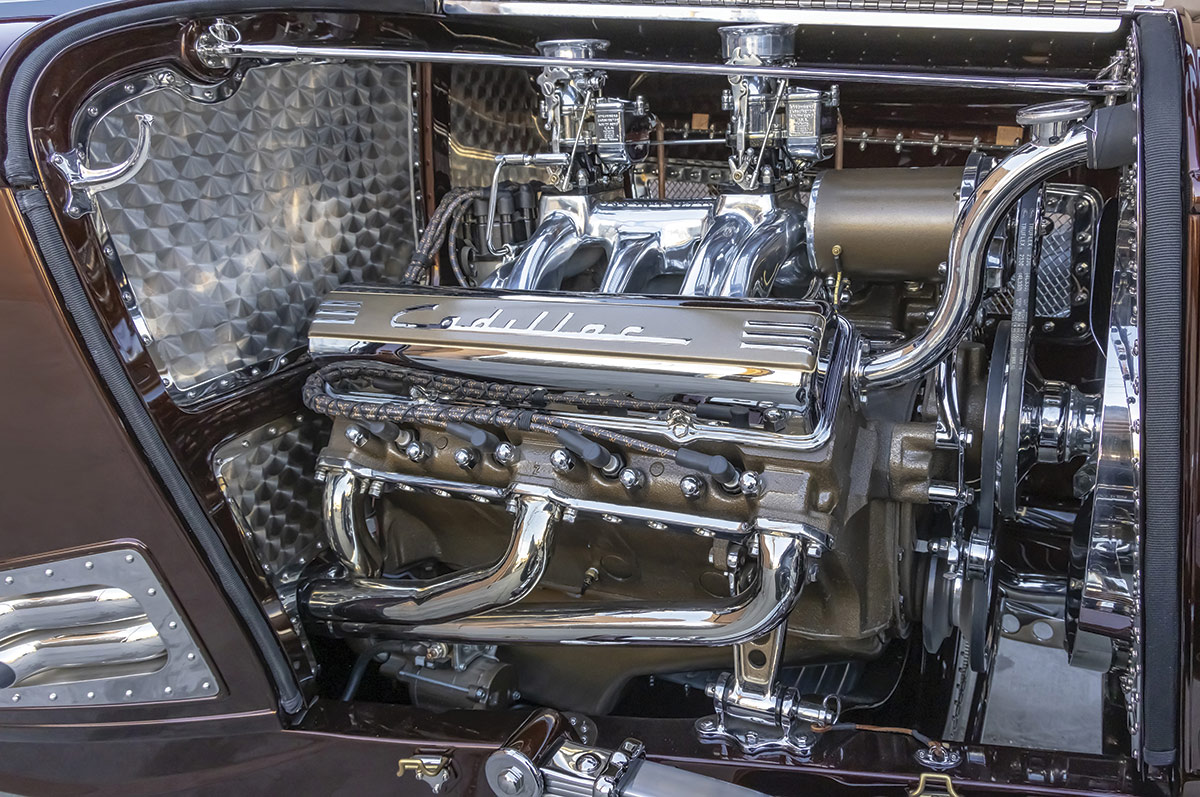
The custom HHR frame features radiused I-beam crossmember, double-radiused dimpled lightening holes throughout, and radiused inner rails with dimpled recesses. The front axle is a custom I-beam fabricated at HHR. The steering is based on a vintage side steering, more race car flair. The front and rear suspension is unique, it features a double quarter-elliptical spring with fully adjustable ride height. The rear has a pocketed single-elliptical spring with upper wishbone tracking arm. The front and rear suspension also employs Telecontrol shocks.
A word on the unique shock package. It is based on the remote-controlled Andre Hydro-Telecontrol friction shocks that are operated through an oil charge. The complete Telecontrol system is comprised of four friction shocks with two regulators (one each for the front and the rear). From here there are two indicator gauges and two reservoir filling pumps all linked together by copper tubing. These two gauges and reservoir pumps are mounted to the top of the leather-covered trans tunnel. This makes for additional mechanical offerings to view when looking at the interior.


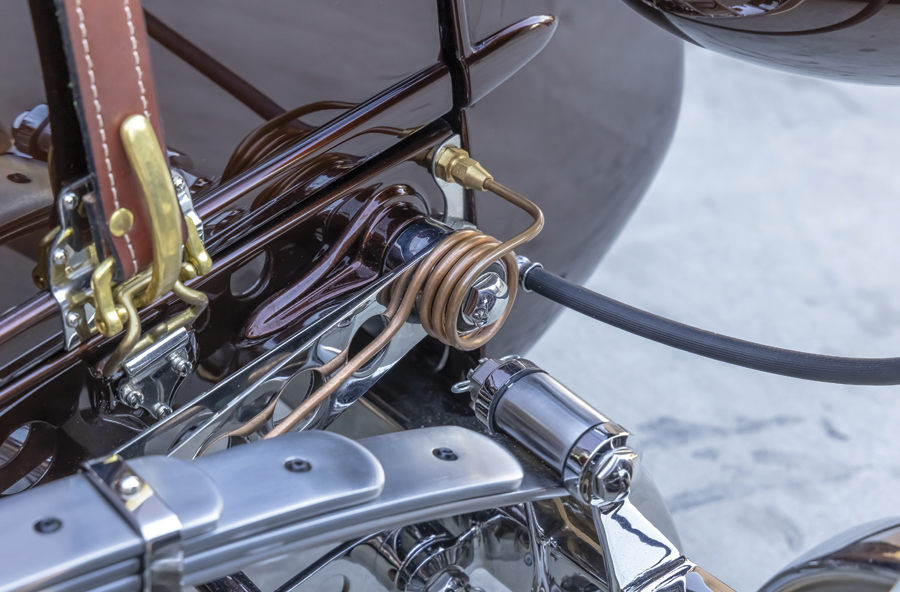
Wheels and tires can make or break the look of any hot rod. We have to say that the combo is spot-on for this Slonaker-winning coupe. The custom wire wheels use the European small hub spline centers, 16 and 18 inch. The wheels were painted and then pinstriped before lacing so the color is clearly visible behind the spokes. The 16×5 and the 18×6 wires were then enveloped with Dunlop Racing rubber, measuring 5.50×16 and 7.00×18.
The interior is truly inspirational and offers what one might find in a European sports car. The suspension is controlled from within the cockpit. For instance, the friction shocks are controlled by pressurized oil, which is controlled by valves positioned near the gear shift lever. There are gauges associated with this function so that the driver can check pressures on the fly and, hence, adjust dampening action. There is more European flair, something that would have been found in a race car of the ’30s. High tech for the day. Other interior and mechanical-inspired details are found in the rail shifter system, “skeleton” handbrake lever, suspension control components, and a roof panel switch.
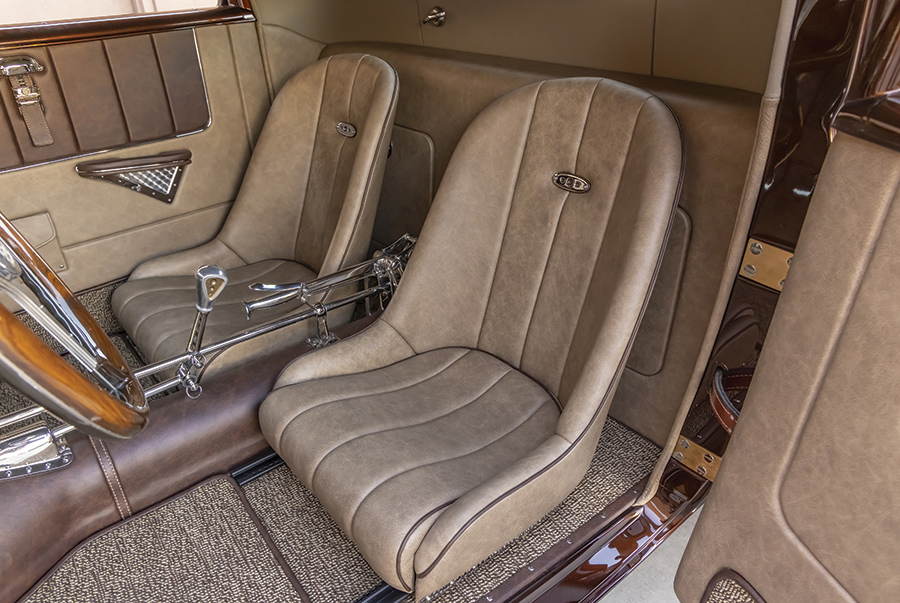

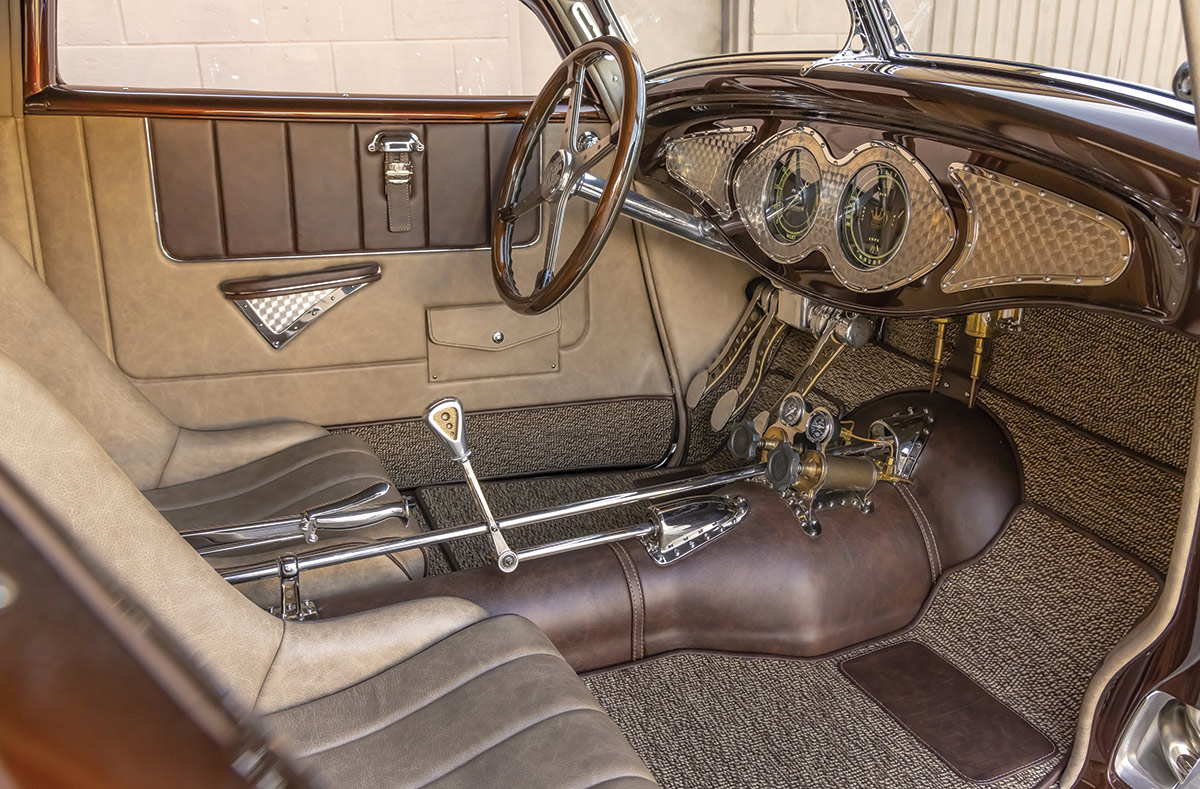
We’ve all heard “It takes a village to raise a child.” Well, it takes the car community to build an award-winning hot rod. No question HHR is given the credit for the build, but Ladd will acknowledge others were critical: e. Black Design Co., Mick’s Paint, Elegance Auto Interiors, Custom Chrome Plating, V&M Metal Polishing, Alumicraft Street Rod Grilles, Alex of Malex Pinstriping, Wheelsmith, Tom Utley (Kingtutley), and, as Ladd would say, “the person we failed to mention.” Aside from taking home the GNRS Slonaker award presented by ARP, it’s received (at the time of this writing) the following awards: Goodguys Del Mar 2022 Meguiar’s Street Rod D’ Elegance award and the Spokane Speed and Custom Show Spokane Cup award sponsored by ARP. (Editor’s Note: Right now we are lobbying to have this amazing coupe brought back to the Shades of the Past Hot Rod Roundup Triple Crown of Rodding competition. As many rodders as possible need to see this one-of-a-kind build. —B.B.)
